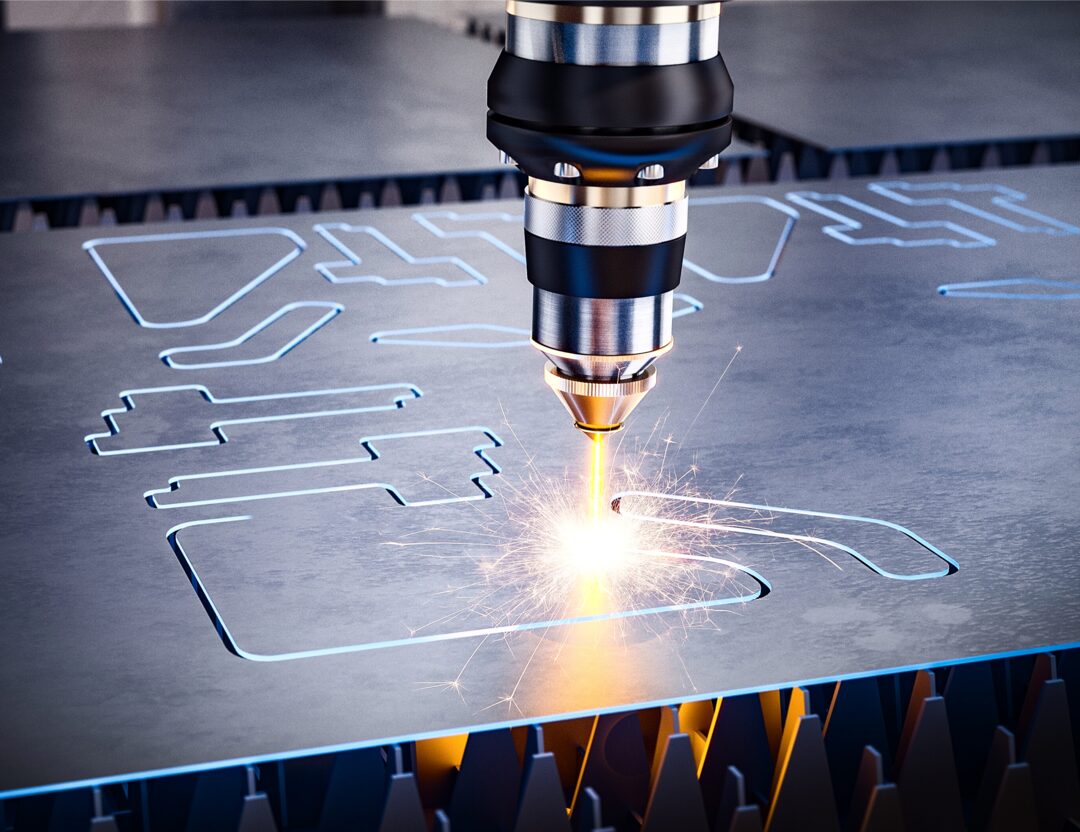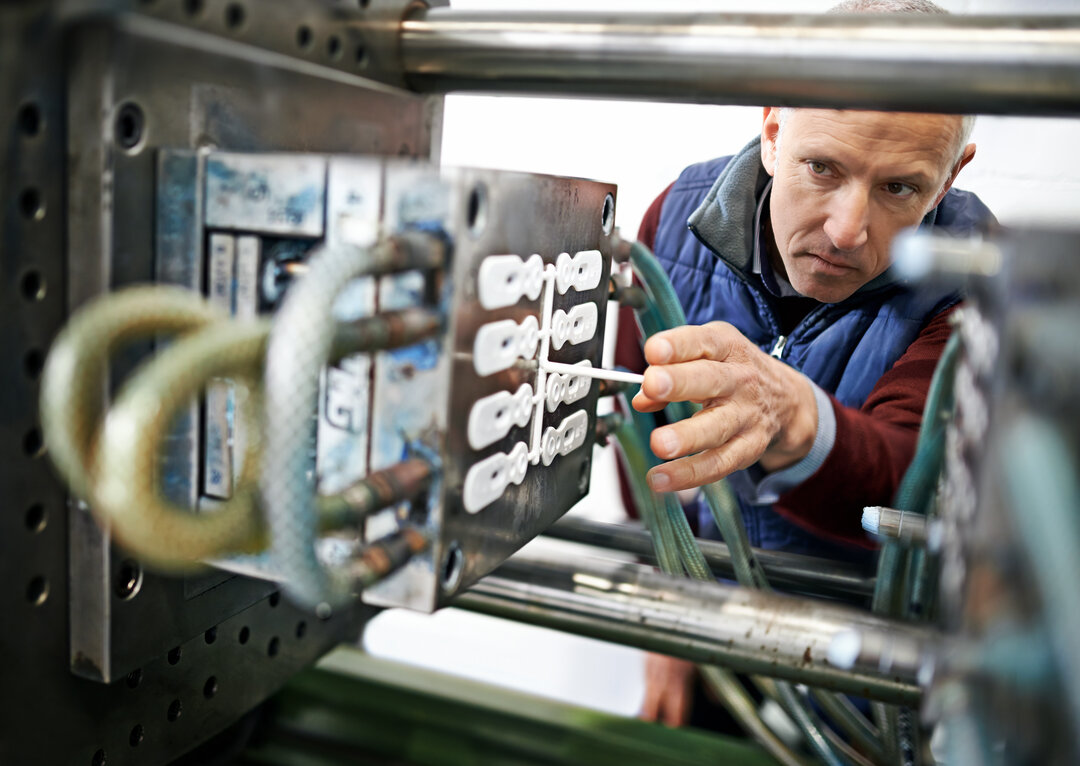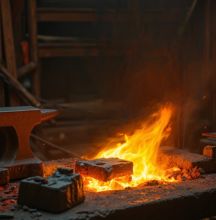What are the benefits of using sheet metal fabrication?

Benefits of Sheet Metal Fabrication: A Complete Guide
Among today’s industrial processes, sheet metal fabrication is one of the most flexible and economical. In this article, we'll discuss the many benefits of Sheet Metal Fabrication and why it is one of the most popular manufacturing processes in industries from automotive to electronics.
Sheet Metal Fabrication: What is it?
Sheet metal fabrication is the process of cutting, bending, punching, and assembling flat metal sheets into specific shapes. This manufacturing approach has advanced dramatically through the years, implementing everything from CNC machines to laser cutting devices to produce parts with incredible speed and accuracy.
- If you're involved with product development, manufacturing, or construction, becoming more familiar with the benefits of sheet metal fabrication can help you make informed decisions regarding your production facilities and material selections.
Unparalleled Strength and Resistance
The most prominent benefit of sheet metal fabrication is that it provides superior strength and durability compared to other manufacturing processes.
Built to Last
Components made using sheet metal fabrication processes have high structural integrity and are able to withstand heavy loads and harsh environments. As a result, sheet metal parts are well-suited for high-performance applications across automotive, construction and industrial equipment industries.
- Fabrication using metals like steel, aluminum, and stainless steel can be incredibly strong, meaning that the resulting products can withstand a great deal of stress before they fail.
Weather Resistance, Corrosion Resistance
Particularly of these qualities are derived from another attribute where some types of sheet metal materials tend to contain high-pressure levels while being resistant to corrosion and degradation that can result from exposure to the sun and the water or the moisture, hoarding a variety of environmental factors.
- With careful choice of materials and appropriate finishing, products crafted through sheet metal fabrication retain their properties under extreme conditions, whether its saltwater in a marine environment or combatting aggressive chemicals in an industrial setting.
Long-Term Performance
Sheet metal fabricated parts are extremely durable, ensuring that the end products have a longer service life. That means the pieces can handle extreme heat, enormous weight and daily use over time with no problems thanks to high-quality metals.
- This reliability makes sheet metal fabrication a critical component for those industries in which safety and performance must not be compromised.
Amazing Design Flexibility
There are endless design possibilities with precision we have in sheet metal fabrication process.
Endless Possibilities
In its nature, sheet metal can be easily molded and formed into several shapes while maintaining structural integrity through the fabrication process
- Sheet metal fabrication can span nearly any design need, from simple brackets to complex enclosures with convoluted geometries.
Custom Solutions for Every Need
The sheet fabrication process holds several significant benefits, among which is its versatility and capability of being modified for individual needs.
- Manufacturers can create complex designs that would be difficult or impossible with other manufacturing methods because sheet metal can be formed, cut, bent, and welded into virtually any shape and size.
Adaptable Production
Thanks to its versatility, sheet metal fabrication is well-suited for creating a variety of industrial components, including enclosures, brackets, chassis, panels, etc.
- Sheet metal fabrication processes can accommodate your production needs, whether you require a one-off prototype or thousands of identical parts, and with minimal retooling requirements.
Impressive Weight Efficiency
Though they are strong, sheet metal parts are surprisingly lightweight for the strength they provide, when compared to other manufacturing processes.
Light but Strong
Despite their strength, sheet metal components can be lighter than comparable weights of other materials like solid metal blocks or castings.
- The ability to combine strength with lightness makes sheet metal fabrication especially important in weight-sensitive applications such as those in aerospace and automotive manufacturing.
Fuel Efficiency Benefits
The use of sheet metal fabricated parts helps augment the light weight of transportation applications, leading to improved fuel economy. Through the weight reduction of any vehicle or aircraft, sheet metal fabrication helps reduce the fuel consumption and overall environmental damage while increasing or improving the performance.
Cost-Effectiveness That Boosts Your Bottom Line
From the material costs, labor to long-term maintenance, sheet metal fabrication technology has significant cost benefits in all aspects of the production process.
Affordable Raw Materials
The raw materials involved in sheet metal fabrication like standard steel or aluminum sheets usually cost less than solid blocks or castings involved in other manufacturing processes
- The economic advantage is further intensified due to the cost benefits at the material level while implementing the process of sheet metal fabrication.
Optimized Production processes
Advances in sheet metal fabrication processes have resulted in the reduction of labor costs and increased production rates
- High-tech CNC machining and automated setups enable low-cost manufacturing with limited human involvement, leading to further reductions in manufacturing costs.
Lower Tooling Expenses
Additionally, sheet metal fabrication usually has lower tooling costs and quicker production times than other manufacturing methods such as casting or molding
- This can make an impactful difference in the prototyping and low to medium production run space, where the tooling costs of other approaches can be cost prohibitive.
Long-term Economic Benefits
Sheet metal components offer long-term cost-saving benefits due to their durability and recyclability. Additionally, many sheet metal parts have a longer service life and lower replacement frequency, contributing to a sustainable manufacturing process with material recycling that can be beneficial in terms of cost.
Manufacturing Quality in Precision and Accuracy
Additionally, modern sheet metal fabrication methods achieve outstanding levels of precision, which are so crucial for intricate assemblies and high-performance applications.
High-Precision Components
CAD and CNC machines have brought the ability to execute sheet metal fabrications with accuracy from conceptualization into reality.
- This level of precision guarantees your part will have the same size and tight tolerances, which is important in industries where exact fit and function are essential.
Consistency Across Production Runs
Automated machinery is used in sheet metal fabrication to maintain quality consistency from the first part to the last. Automated machines like CNC cutting, prototyping, bending, and hydraulic shearing produce parts at tolerances where only the accuracy and precision that can reach a millimetre or even micron.
- This essential for applications where components need to fit together correctly within complex assemblies.
Tight Tolerance Capabilities
While for most sheet metal fabrication projects, bends can be held to ± 1.0° and dimensional tolerances can be held to a nominal 0.254mm or +/- 0.010".
- Such accuracy makes it possible to build intricate assemblies where the different elements must interlock seamlessly, improving both the product's form and function.
Speed and Agility in Production
In the current rapid production climate, design speed and iterations translate to market advantage. That's where sheet metal fabrication shines.
Speed Functionality
And with computer-controlled machines and efficient production setups, the metal fabrication process can be very quick.
- This is especially advantageous for industries that need rapid product development cycles or have evolving design requirements.
Shortened Lead Times
There are numerous processes involved in sheet metal fabrication, and working with a full-service manufacturer that can provide fabrication, finishing and assembly can significantly reduce lead times.
- This unified method removes the latency sometimes encountered when switching between other service providers.
3D CAD Technology Advantages
Lead times on sheet metal prototypes can be cut by up to 50% using 3D CAD technology.
- And quickly providing a CAD file when requested for a quote enables fabricators to produce formed sheet metal prototypes in as little as 3 days, streamlining the product development cycle even further.
LEARNING ABOUT SUSTAINABILITY AND ENVIRONMENTAL BENEFITS
With the growing importance of environmental considerations, the sustainability aspects of manufacturing processes are becoming more and more relevant. In this blog, we will talk about the environmental benefits of sheet metal fabrication.
Highly Recyclable Materials
Sheet metal components, especially components made of steel or aluminum, are very recyclable
- The scrap materials find their way back to the surface and are melted down so they can be reused when a variety of components for the sheet metal are produced for new clients within the industry; allowing for a lessened impact on the environment, and sustainability of manufacturing operations.
Reduced Waste in Production
Using advanced processes for sheet metal fabrication like computer-controlled cutting and forming reduce material waste and increase reuse through optimal nesting and cutting plans. This material efficiency helps to reduce the environmental impact of the production process.
Energy Efficiency
Most of the modern sheet metal processes can be energy efficient and reduce the environmental impact of the manufacturing process. Technologies such as fiber laser cutting provide better results and consume less energy as compared to conventional means of cutting metals.
VERSATILITY ACROSS INDUSTRIES
Sheet metal fabrication has long been a requirement in various industries, and each in their own unique way uses its benefits to produce better products.
Automotive Applications
There are industries heavily reliant on sheet metal fabrication, such as the automotive industry, which uses it for body panels, chassis components, brackets, and many more parts. The ability to combine strength with weight efficiency and design flexibility, confirms sheet metal must be used to design vehicle components that effectively balance performance, safety, and aesthetics.
Aerospace Engineering
For aerospace, weight and strength are essentials, and sheet metal fabrication is the best option between them. Fabricated sheet metal parts play a role in everything from interior components to structural elements that impact aircraft performance, safety and fuel efficiency.
Construction and Architecture
Making the transition in to site engineering / management, sheet metal manufacture is important for your construction and architectural requirements such as roofing, siding, HVAC systems, and decorative features. Sheet metal can withstand the test of time, enabling architects and builders to design significant and spectacular structures.
Consumer Products and Electronics
The electronic industry uses the sheet metal fabrications to make enclosures, chassis, heat sinks, and shields. Custom Metal Fabrication Solutions for Electronics. The precision and customization capabilities of sheet metal fabrication make it an excellent process for creating parts that protect and enhance electronic devices while also meeting tight tolerances.
THE BEST SHEET METAL FABRICATION PROCESS FOR DIFFERENT MATERIALS
There are many different sheet metal fabrication processes out there and choosing the best one for your project needs careful consideration of multiple factors.
Learn Different Techniques
Technologies used in sheet metal fabrication services vary, ranging from laser cutting, punching, bending, forming, welding, and finishing. Each of the techniques has its advantages and disadvantages, and it is crucial to know what processes fit what applications and what materials.
Factors in Choosing Materials
Metals have varying characteristics such as weight, strength, corrosion resistance, and cost. Some common materials used for sheet metal fabrication are mild steel, stainless steel, aluminum, copper, and certain alloys. For every part, choosing the right material will ensure that the final component satisfies performance requirements, while remaining within budget limits.
Design for Manufacturability
Designing parts with manufacturing in mind can play a major role in cost, quality and time in which production can be achieved. Design for Manufacturability (DFM) principles, including but not limited to minimum bend radius, hole-to-edge distance, and the avoidance of unnecessarily complex geometries, which enable functional and sheet metal fabrication-friendly designs.
Working with Experienced Fabricators
Work better with experienced sheet metal fabrication specialists who understand your technical fabrication-specific needs and industry end-requirements. Experienced fabricators are often able to provide constructive feedback on possible design modifications, material selection, and process changes that enhance quality while lowering cost.
Getting Started with Sheet Metal Fabrication
So, If you are thinking about sheet metal fabrication for your next project, here are some steps to get you started:
- Clearly define your project requirements yourself — performance specifications, budget constraints, production volume etc.
- Make high-level design documentation with 3D CAD models ideally
- Validate sheet metal design for manufacturability principles
- Choose suitable materials as per application requirements
- Find an established sheet metal fabrication supplier who has worked with other businesses in your industry
- Ask for prototypes before beginning full production
- Implement Quality Control processes to ensure consistent outcomes
Remember that providing complete information when requesting quotes can significantly improve accuracy and reduce lead times for sheet metal fabrication projects
THE FUTURE OF SHEET METAL FABRICATION
The sheet metal fabrication industry continues to evolve with advances in automation, digital manufacturing, and sustainable practices. Future trends include:
- Increased automation and robotics integration
- Advanced materials with enhanced properties
- More sustainable manufacturing processes
- Digital twins and simulation for optimized production
- Integration with additive manufacturing for hybrid approaches
As industry continues to advance, these trends will only serve to maximise the advantages offered up by sheet metal fabrication.
Conclusion
Sheet metal fabrication provides numerous benefits that makes this a crucial manufacturing method for OEMs in many different applications. Sheet Metal Forming offers many advantages, including its higher strength and durability, flexibility and more capacities in design, process efficiency, lower manufacturing costs and environmental advantages.
When designing a new product, updating an older design or working to improve your manufacturing processes, sheet metal fabrication is something that should be high on your list. By adjusting the knowledge of its advantages and teaming up with metal fabricators with rich experience, you can exploit the capability of sheet metal fabrication and manufacture better components, minimize expenses, and obtain an upper hand over your particular field.
For businesses seeking reliable, scalable manufacturing solutions, sheet metal fabrication offers unparalleled advantages. By partnering with experienced providers like Zeometrix, companies leverage cutting-edge technology and decades of expertise to bring their visions to life.


